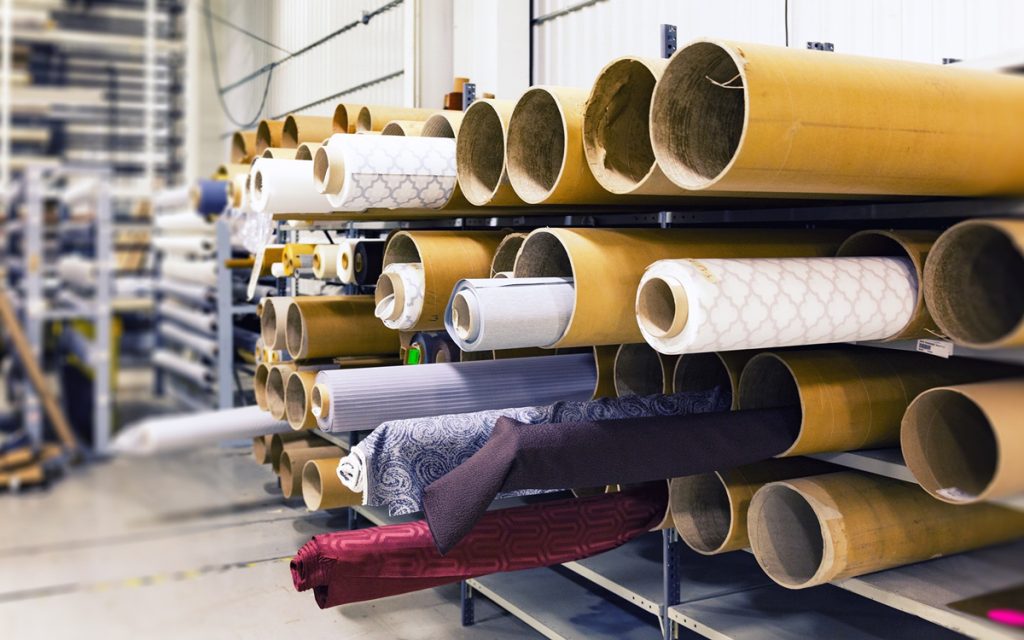
Previously considered the growth engine of the South African economy, the manufacturing industry has been in decline – with local manufacturers facing multiple challenges.
The manufacturing sector has been an area of focus for government as it offers the greatest potential for job creation and economic growth.
In 2016 the government launched the Black Industrialist Scheme (BIS) which has the manufacturing sector as a key focus, to help stimulate the manufacturing industry.
To date the scheme has backed 102 industrialists, including some success stories in the manufacturing sector such as Microfinish Automotive in KwaZulu-Natal, which manufactures and supplies valve guides and valve seats to original vehicle manufacturers and after-market service providers; Maneli Pets, an agro-processing company which produces high-end pet food; United Industrial Cables which received R46-million for the manufacturing of a variety of copper cables; and Mthembu Tissue, a paper tissue manufacturer.
Despite this, the sector is under pressure, says Lebo Raolane, Senior Investment Associate at Old Mutual’s Masisizane Fund. “The sub sectors are really mature and you need a high capital to get into the industry.
“Also, if you look at the last 20 years, the manufacturing industry’s contribution to the GDP has dropped. Manufacturing is struggling.”
Industry overview
The manufacturing is very broad with ten sub sectors. The sector contributes 15% of South Africa’s GDP.
Weak demand for manufactured goods in the South African economy, rising operational costs, as well as concerns over the political landscape and policy uncertainty, have stalled the performance of the manufacturing sector, the IDC’s Sector Trends report March 2018 finds.
However, according to this IDC report, positive economic developments in some of South Africa’s key external markets, including Europe, supported production in export-oriented industries.
Manufacturing in South Africa is dominated by the following industries:
Agriprocessing and agriculture: Includes honey processing, dairy processing, small scale rice milling, grain milling, palm oil extraction milling, poultry feed plants, water purification and bottling plants.
Automotive: Includes automotive and component manufacturing and automotive leather upholstery manufacturers, etc.
Chemicals: Includes producers of petroleum, mining chemicals, explosives, lacquer thinners, biofuel, lubricants, fibre, soap, bleach and cosmetics.
ICT: Includes telecoms infrastructure or equipment providers including manufacturers of fibre optics, fibre-optics cabling, telecommunication cables and connectors.
Electronics: Includes electronic component, safety and security systems, renewable energy control equipment and the lighting industry, etc.
Metals: Suppliers of iron and steel products – supplying automotive, nuts and bolts, construction, packaging and chains.
Textiles, Clothing and Footwear: Includes synthetic fibre production; spinning yarn, knitting and weaving fabrics; dyeing, printing and finishing fabrics; non-woven textiles; home textiles; clothing manufacturing; footwear; leather tanning, and leather products.
Opportunities
While the sector remains under pressure, some local manufacturers in particular niches are doing better that others. This includes the energy sector which holds potential for manufacturers to grow revenues with a green offering.
There’s not much growth within the manufacturing industry, because most of its sectors are mature, says Raolane.
He adds that most manufacturing sectors are either not growing or are just stable.
However, there are potential opportunities within the technology or biotech areas, he says. “It’s still in growth phases and they are still trying to establish themselves within the South African market.”
Raolane’s advice for entrepreneurs who are still keen to enter the sector is rather than competing, to think about what are the raw materials and if there are raw materials, pre-empt the value. “Think about where you can add value.”
The food and beverage, especially the wine industry has opportunities to export, he says. “You need to know the agriculture input well.”
Challenges
The manufacturing industry’s role in the South African economy has seen a long and sustained decline: from contributing nearly a quarter of GDP in the 1980s, the sector in 2016 contributed 13% to the country’s GDP.
There have been efforts to reignite the sector. The Manufacturing Circle, the industry’s voice, recently launched its ‘Map to a Million New Jobs in a Decade’ plan. It aims to expand manufacturing’s contribution to the country’s GDP to 30% and create between 800 000 and 1.1m direct jobs – as well as 5 to 8 times as many indirect jobs – in the process.
The South African manufacturing industry is also currently being transformed by technology. This has not only raised concern about what the impact of technology will be on the sector, including a massive loss of manufacturing jobs, but has also the lack of South Africa’s lack of digital skills needed to compete globally.
South Africa’s market is also vulnerable to imports from China, India, Brazil and other countries that offer much higher incentives and protection to their manufacturers.
According to the South African Market Insights, there is a lack of demand in the economy for manufactured goods in recent years due to cheaper imports being available.
Raolane explains that the labour costs in South Africa is relatively higher than other countries because other countries don’t have strict labour laws.
The Proudly South African initiative has spearheaded initiatives such as the Buy Local encouraging local consumers to buy locally produced goods and increasing the procurement of locally manufactured goods, provided that cost and quality are competitive.
Set up costs
Launching a manufacturing business has high set up costs – this often includes specialised facilities, complex equipment and raw materials. Another factor is the cost of acquiring workers with special skills which may also be required.
Manufacturing is a energy intensive so entrepreneurs looking to get into the sector will also have to contend with high energy costs.
Raolane says set up costs will vary because it depends on the type of business you want to put up. You’ll need machinery and this means more than one machine, and more most likely, will need to import machines.
“You need expertise to work with the machinery. Depending on the sector, the set up costs can be between R1-million to R20-million.”
Funding
According to Raolane there is some support from the government to try to stimulate the industry. The Dti’s Industrial Policy Action Plan (IPAP) programme, for example has industry specific incentives and grants. A full list of DTI incentives available here.
There is funding available, you just have to look for it,” says Roalane, and adds that entrepreneurs also need to have the expertise to execute that funding.
More funding programmes and incentives available to South African manufacturers are:
Manufacturing Competitiveness Enhancement Programme (MCEP)
The programme provides enhanced manufacturing support, encouraging manufacturers to upgrade their production facilities in a manner that sustains employment and maximises value-addition in the short to medium term.
Manufacturing Investment Programme (MIP)
The MIP is a reimbursable cash grant targeted at local and foreign-owned manufacturers. The grant’s criteria says the manufacturers need to have an interest in the following: a new production facility, expansion of an existing production facility, upgrade of an existing facility in the clothing and textile sector.
Isivande Women’s Fund (IWF)
Isivande Women’s Fund (IWF) is an exclusive fund that aims to accelerate women’s economic empowerment by providing more affordable, usable and responsive finance than is currently available. The IWF targets formally registered, 60% women-owned and/or managed enterprises that have been in existence and operating for two or more years with a loan range of R30 000 to R2 million.
Find out more about the Isivande Women’s Fund from the Department of Trade and Industry (the dti).
Automotive Investment Scheme (AIS)
The Automotive Investment Scheme (AIS) is an incentive designed to grow and develop the automotive sector through investment in new and/or replacement models and components that will increase plant production volumes, sustain employment and/ or strengthen the automotive value chain.
The AIS provides for a non-taxable cash grant of twenty percent (20%) of the value of qualifying investment in productive assets and twenty five percent (25%) of the value of qualifying investment in productive assets by component manufacturers and tooling companies as approved by the dti.
Old Mutual’s Masisizane Fund
The Masisizane Fund helps both rural and peri-urban township businesses in the agribusiness (primary and agri-processing), franchising and commercial, supply chain and manufacturing sectors.
Black Industrialist Scheme
The Black Industrialist Scheme is an initiative by the Department of Trade and Industry to get more black people involved in the productive sectors of the economy like transport, green industries, agroprocessing, biofuels and chemicals. More info here.
Agro-processing Support Scheme
Launched in 2017, the Agro-processing Support Scheme (APSS) incentive scheme is a R1-billion cost-sharing grant fund designed to boost investments in new and existing agro-processing projects. The scheme targets food and beverage value addition and processing (including black winemakers), furniture manufacturing, fibre processing, feed production, and fertiliser production. More info here
- See also: Funding For Rural Women In Agriculture
Export Marketing and Investment Assistance
For manufacturers looking to explore trade and investment opportunities in foreign markets and to help them trade on the global stage, the Department of Trade and Industry (dti) offers the Export Marketing and Investment Assistance (EMIA) incentive scheme to partially compensate exporters for costs incurred in respect of activities aimed at developing export markets for South African products and services abroad and to recruit new foreign direct investment and potential customers into South Africa. More info here
Rules and regulations
Manufacturing has ten sub-sectors with other sub-sectors falling under each one. This makes the sector a complex one to navigate, says Roalane. “It’s not a one size fits all with manufacturing.”
All businesses will have to comply to general regulations, this includes registering with the CIPC and SARS, as well as complying with labour law, including minimum wage, UIF and employee tax.
Some of the regulations that manufacturing business owners will have to comply with include:
South African Bureau of Standards (SABS)
The South African Bureau of Standards is an agency of the DTI with a mandate for standards, assessment and certification. The SABS has access to expertise across a wide range of industrial areas with engineers and technical experts located across ninety test laboratories in fields such as electro-technical, food and health, transportation, mining and minerals and materials (piping, plastics, and textiles).
Manufacturing licensing
All manufacturing businesses require a licence to operate, by each specific sector. This includes petroleum and wine manufacturers pharmaceutical and automotive manufacturers, etc.


